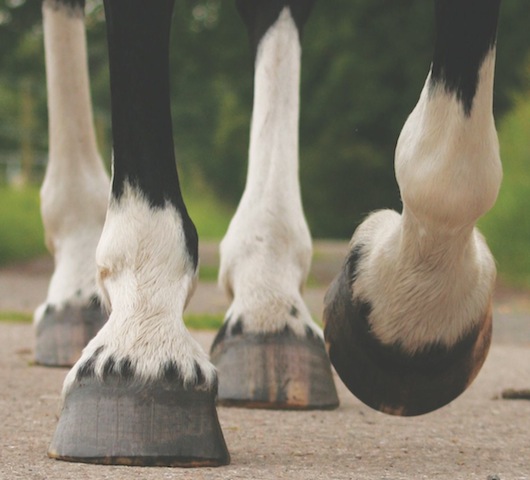No products in the basket.
Horsecare, Seasonal Advice
Hoof health in the winter months
Along with the winter months comes the inevitable change in weather and ground conditions. That can be challenging for the horse’s hooves which go through a lot…and as the saying goes, no hoof, no horse. Here are a few considerations to help maintain healthy hooves this winter.
- Avoid sticky situations; Unless you’re lucky enough to have extremely well-draining paddocks, muddy fields and gateways in particular are pretty much just a fact of life in the winter. This can be a real nightmare for owners and makes trying to keep shoes on a challenge. If possible, keep your driest paddocks for the winter months, try to feed away from muddy areas, and consider the use of mats or a hardcore base to avoid deep, sticky ground in problem areas such as gateways.
- Support your horse from the inside out; Nutrition plays a huge part in hoof health, and is a particularly important consideration in winter when availability of fresh forage is limited and demand is met from preserved forages which affects vitamin and mineral supply to the horse. Every Horslyx Balancer contains the unique Healthy Hooves package which contains optimum levels of Biotin for improving hoof wall quality, Methionine and Chelated Zinc. Offering Horslyx Balancers can help promote healthy hoof growth and negates the need for further hoof supplementation in many horses.
- Avoiding abscesses; Bacteria thrives in moist, muddy conditions, which explains why abscesses are commonly seen during periods of prolonged wet weather when hooves are already softened and vulnerable. Sudden, acute lameness in one hoof is often a sign of an abscess, and will require immediate veterinary or farriery assistance to release the pus in the foot. Again, trying to ensure your horse is not standing in wet, muddy conditions can help prevent this type of bacterial infection, and if your horse is prone to these your farrier may be able to suggest a protective pad as a physical barrier.
- Bacterial infections; Thrush is another common infection, caused by bacteria thriving in soiled or boggy conditions and is usually identified easily by dark discharge and a foul smell. Good hoof hygiene is key for prevention and treatment, so keeping the hoof dry, clean and regularly picked out is vital, as well as providing clean stable bedding and ensuring access to a dry and mud free environment.
- Having a hard time; When the temperature drops and ground becomes frozen and firm, extra care should be taken in ridden work to avoid concussion which could lead to lameness and/ or cracks in the hoof wall.
- Pressure points: Bruises are a common hoof complaint which can sometimes be avoided by careful consideration to ground conditions. Uneven, frozen ground can cause bruises to the sole, whilst muddy ground can cause stones to become lodged in the hoof. Periodically removing stones from paddocks is a sensible measure. Picking out the feet regularly can also prevent compacted snow or frozen mud from causing bruises or significant pressure to the sole. A coating of vaseline can also serve to prevent snow from balling up.
Prevention is always better than cure, so being well prepared for the challenges hooves face in the winter months is key. The three key points to consider alongside your usual hoof care regimes and a good, qualified farrier are:
- Appropriate nutrition to support hoof health, such as Horslyx Balancers
- Maintaining hoof health through regular picking out and application of hoof treatments
- Avoiding muddy conditions as much as possible, and maintaining a clean, hygienic environment for your horse in the stable

